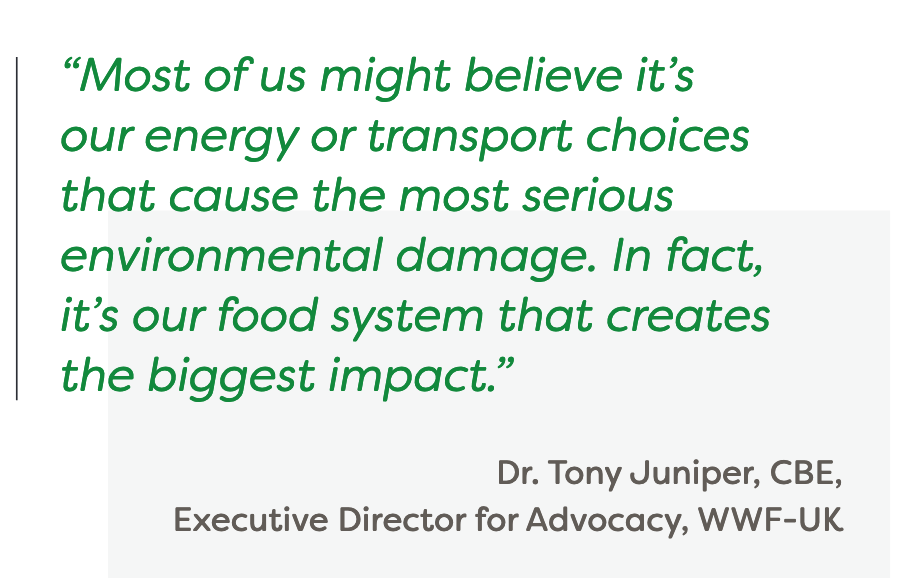The World Wildlife Fund notes that a 60% decline in wildlife populations since 1970 proves that working to protect animals is no longer enough to save them. We have to reverse the forces driving habitat loss and a huge part of that is coming from how we are eating:
- 75% of it’s now from just 12 plants and five animal sources.
- Nearly 60% of plant-based calories in most diets are from just three crops — wheat, corn and rice and we are plundering the earth’s natural biodiversity to grow them.
- Meanwhile, diet-related illness are plaguing our population and bankrupting sick care systems with one third of our kids now headed for obesity.
The new report from WWF and Knorr called Future 50 Foods reminds of 50 diverse, nutritious and affordable food types that most are overlooking, and why it’s essential we evolve our eating habits to sustain our environment and feed the growing global population. These are foods that humans have always eaten, but most of us have forgotten what they look like and how to prepare them. If we’re going through the effort of cooking, we might as well make food that’s delicious and health enriching, right?
Adopting new-old eating habits is a win-win-win because plant-rich diets are best for us, the earth and our taste buds–these are mind-blowingly delicious foods to eat. As the report explains:
 “What’s exciting about this is some of the biggest issues we face – climate change and human health – are coming together and the solutions are deeply aligned…What’s good for us is also better for the planet… consumers can just as easily drive the solutions as the problems. And don’t worry if you’re not familiar with foods like fonio grain or salsify root. You can start by cutting back on meat and eating more beans.”
“What’s exciting about this is some of the biggest issues we face – climate change and human health – are coming together and the solutions are deeply aligned…What’s good for us is also better for the planet… consumers can just as easily drive the solutions as the problems. And don’t worry if you’re not familiar with foods like fonio grain or salsify root. You can start by cutting back on meat and eating more beans.”


